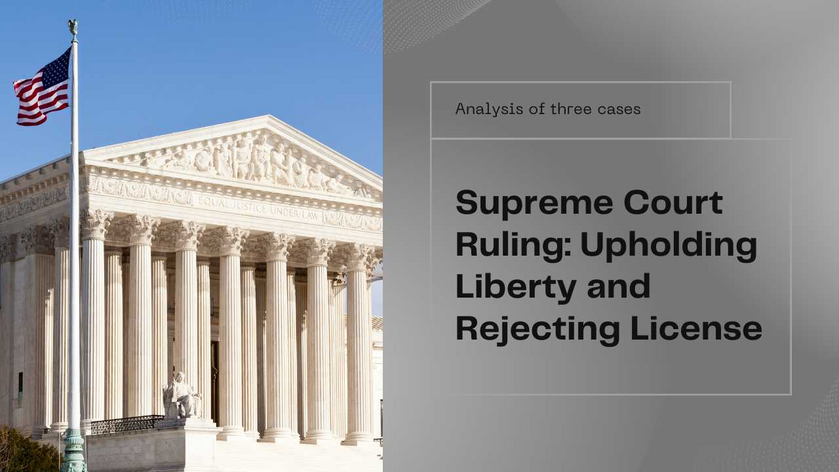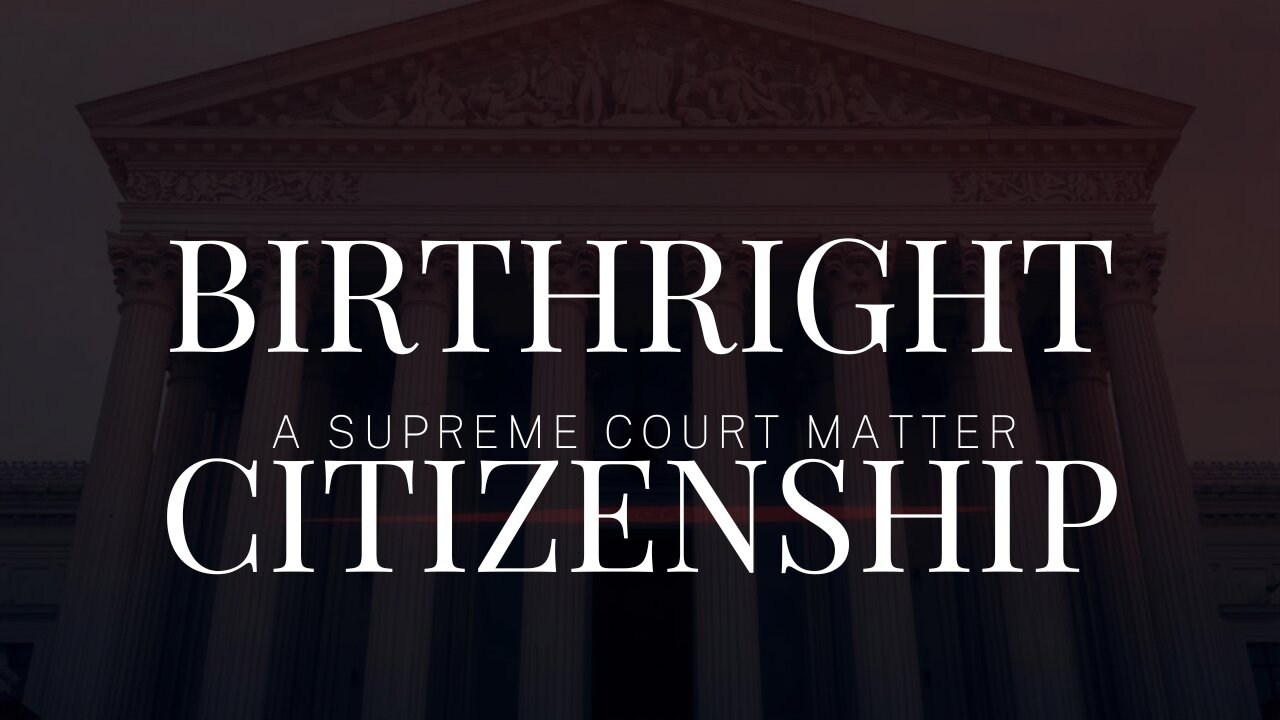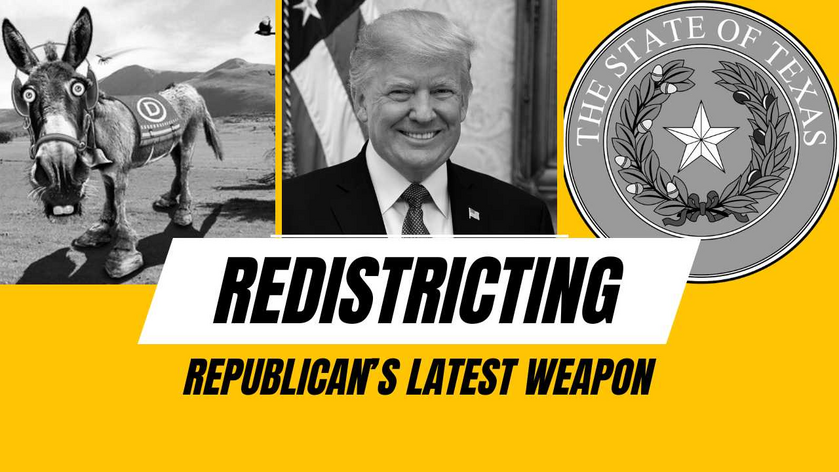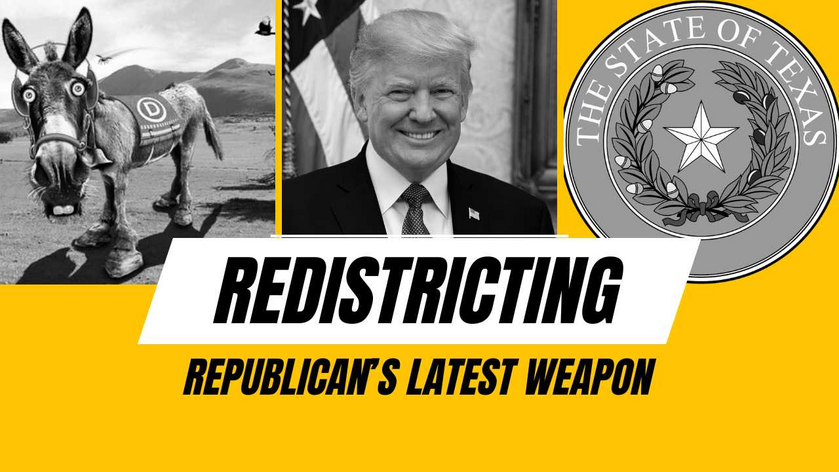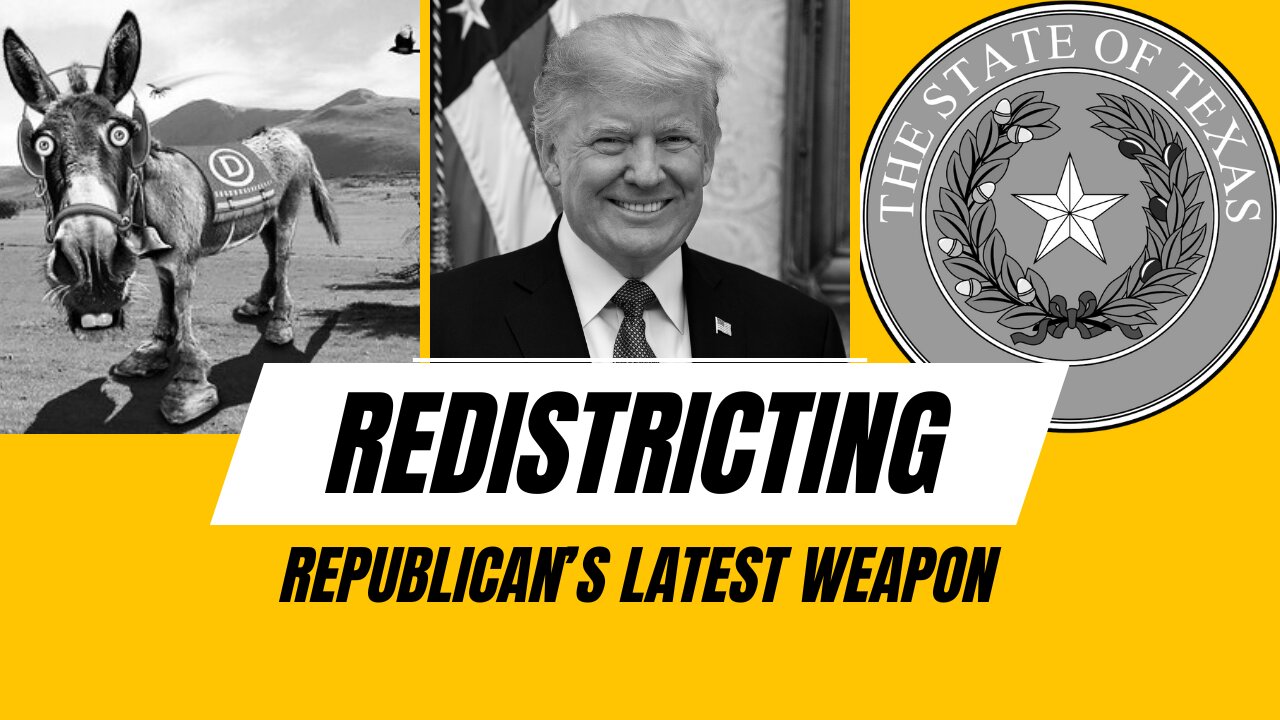Today the Supreme Court released three more cases, leaving at least three to announced Monday of next week (July 1). These three cases have one thing in common: in each, the Moderates accepted the perspective of the Originalists. (With one exception, which CNAV will describe in greater detail below.) In so doing, the Moderate Bloc would appear to be redeeming itself – except that one must remember that the Supreme Court has already decided weeks ago the cases they announce in June. Two of these cases strike blows for liberty; the third, a blow against license. One case corrects a serious error of judgment, not of the Court only, but of the Reagan administration. Another gives a hint – though not completely reliable – that the Court will not sympathize with January 6 related prosecutions.
No more public camp-outs
Grants Pass, Oregon (in Josephine County), has always had a problem with homeless people. According to the Syllabus, 600 people might be homeless at any given time. Grants Pass has laws against camping on public property or parking overnight in a city park. As to the homeless, Grants Pass tries to shelter them. The problem: they can’t shelter all the homeless in their city all the time.
The Ninth Circuit Court of Appeals always had a somewhat crazy bench before Donald Trump tried to solve the problem. In Martin v. Boise, that Circuit held that enforcing the no-camping law against the homeless constituted “cruel and unusual punishment” if, at any given time, even one homeless person couldn’t find “practically available” shelter.
Naturally, homeless people started suing Western cities left and right. In this case, the plaintiff-respondents won certification as a class and got what the Supreme Court called a Martin injunction against the city. Here the Syllabus reveals an interesting twist: class members were not willing to use the city’s available shelter. That shelter has rules, among them:
No smoking, and
Persons seeking shelter must attend religious services.
Grants Pass appealed to the Ninth Circuit, and drew a panel that voted 2-1 to affirm the injunction. The city sought a hearing en banc, and didn’t get it, so it went straight to the Supreme Court. Apparently several other cities briefed the Court as friends of the court, to urge a reevaluation of the Martin case.
Supreme Court holding
The Supreme Court held that laws against public camping and overnight parking do not constitute cruel or unusual punishment. Not, at least, when they apply with equal force to everyone. Grants Pass v. Johnson et al., 603 U.S. ____ (2024).
First, the Eighth Amendment applied to the kind of punishment prescribed for criminal offenses. It did not apply to the kinds of behavior a government might deem criminal. But the plaintiffs relied on one exception: Robinson v. California, 370 U. S. 660 (1962). In that manner, the Supreme Court (under Chief Justice Earl H. Warren) held that a State may not punish someone merely for being addicted to a controlled substance, unless and until the addict committed crimes, either to feed his addiction or for some other motive(s).
But after handing down that case, the Supreme Court never respected it as a precedent. In this case, Justice Neil Gorsuch, writing for the majority, said the no-camping and no-parking laws in Grants Pass were nothing like the old California law against addiction to narcotics. Those laws do not say, “No person shall be homeless,” but merely, “No person shall camp on public land.” (Nor park overnight in a public park.) Therefore, Robinson doesn’t apply.
Furthermore, several Ninth Circuit judges, dissenting from the decision to deny the en banc hearing, roundly criticized the Martin case. Armed with this intellectual ammunition, Gorsuch firmly said the Martin case must fall before the Supreme Court’s precedents and the true meaning of the Constitution.
Votes, concurrence, and dissent
Gorsuch carried with him the two other members of the Originalist Bloc: Clarence Thomas and Sam Alito. He also won the Moderate Bloc – Chief Justice John Roberts and Justices Amy Coney Barrett and Brett Kavanaugh – to his side. Predictably, the Liberal Bloc – Justices Ketanji Brown Jackson, Elena Kagan, and Sonia Sotomayor – dissented.
Clarence Thomas, in concurrence, wrote that Robinson “was wrongly decided.” He made abundantly clear that, as soon as a case on point reaches him, he will vote to overrule Robinson. He also reiterated the principle he introduced in New York State Rifle and Pistol Association v. Bruen – namely that one must interpret the Constitution according to the fixed meaning of the original text.
Modern public opinion is not an appropriate metric for interpreting the Cruel and Unusual Punishments Clause—or any provision of the Constitution for that matter.
Much of the Court’s other Eighth Amendment precedents make the same mistake. Rather than interpret our written Constitution, the Court has at times “proclaim[ed] itself sole arbiter of our Nation’s moral standards,” Roper v. Simmons, 543 U. S. 551, 608 (2005) (Scalia, J., dissenting), and has set out to enforce “evolving standards of decency,” Trop v. Dulles, 356 U. S. 86, 101 (1958) (plurality opinion). “In a system based upon constitutional and statutory text democratically adopted, the concept of ‘law’ ordinarily signifies that particular words have a fixed meaning.” Roper, 543 U. S., at 629 (opinion of Scalia, J.). I continue to believe that we should adhere to the Cruel and Unusual Punishments Clause’s fixed meaning in resolving any challenge brought under it.
Justice Sotomayor, in dissent, essentially said it would be cruel ever to regulate where one might sleep at night. The details of her dissent scarcely matter. Throughout, she seems to hold that what local governments need is taxpayers’ money to build more shelters. Presumably those shelters would not have no-smoking or other rules.
CNAV has noted before how she treats the Supreme Court as a court of equity, not law. Here she openly supports lawlessness, and any attempt to impose order. Finally, one more thing is instructive to observe. The cure for “the homelessness crisis” is to remove impediments to the development of an economy that might provide gainful employment to everyone, to the extent that they can afford, and pay for, their own shelter. It is not to provide shelter at public expense without limit.
The Supreme Court strikes a blow for January 6 convicts
Joseph Fischer was one of perhaps 200 people who gained entry into the Capitol on January 6, 2021. They did so after elements of the Capitol Police fired rubber bullets at an inoffensive crowd. Fischer, for his part, never actually entered the Capitol until after the joint session of Congress had already recessed.
The question of the Capitol Police’ conduct didn’t come before the Court. Rather, the attempt by a vindictive – and selective – prosecuting authority to charge Fischer with an offense more appropriate to financial crime, did. The government charged him under, among other laws, 18 USC section 1512(c)(1 and 2). This title, part of the Sarbanes-Oxley law, reads in relevant part:
(c) Whoever corruptly — (1) alters, destroys, mutilates, or conceals a record, document, or other object, or attempts to do so, with the intent to impair the object’s integrity or availability for use in an official proceeding; or (2) otherwise obstructs, influences, or impedes any official proceeding, or attempts to do so, shall be fined under this title or imprisoned not more than 20 years, or both.
That word otherwise caused a divided panel of the Court of Appeals for the District of Columbia to reverse an earlier dismissal of that charge at trial level. But in his opinion, Chief Justice Roberts disagreed.
According to the CJ, otherwise means any act similar in kind or degree to elements of a preceding list. It does not mean positively any other kind of obstruction anyone could invent or attempt.
Justice Jackson surprised everyone with her vote for the majority! Putting on her adult clothes for once, she wrote a separate, detailed treatment of those two sections that clearly precluded any extension of that word otherwise to include unlawful entry, unlawful presence, etc.
A shocking dissent
Justice Amy Coney Barrett surprised everyone with equal force – by dissenting from the majority opinion. CNAV noted, after the oral argument, that Justice Barrett might present a problem for Fischer. She, more than any other member of the Moderate Bloc, took pains to include the vote count session as “an official proceeding.” In her dissent, she returned to that theme – and used that word otherwise to include conduct bearing no relation to the destruction, mutilation, alteration – or fraudulent substitution – of documents.
Justice Jackson, in her concurrence, did say that the charge under 1512(c)(2) could come back if anyone showed that Joseph Fischer laid hands, or tried to lay hands, on the lists of electoral votes that Electoral College members “transmit” to Congress. But Justice Barrett insisted that the riot qualified as obstruction. (Never mind that Fischer didn’t enter the Capitol until after the recess had already taken place. That seems to have borne no mention in any of the opinions. Then again, the Supreme Court is not a trier of fact.)
One thing only can explain Barrett’s attitude: she has a very serious problem with January 6 participants. On the fateful day in which the Court denied the appeal of the State of Texas for intervention in the certification of elections in Pennsylvania, hallway bystanders caught her smiling like Leonardo da Vinci’s Mona Lisa when exiting the conference room. What could have turned a mild-mannered mother of seven into a “hanging judge”? That might prove impossible to determine.
The Big One: Chevron Deference dies!
CNAV turns now to the last two cases, which the Court consolidated: Loper Bright Enterprises v. Raimondo and Relentless v. Raimondo. The “Raimondo” in view here is Gina Raimondo, Secretary of Commerce. The petitioners in the two cases operate fishing boats in the Atlantic Fishery, which extends 200 nautical miles offshore. Cases involving fishing vessel regulation might not seem important. But they are when they involve principles that go to other economic areas of federal regulation.
Both cases involve a peculiar doctrine that has given quasi-legislative, quasi-judicial executive agencies an overweening power: Chevron deference. That doctrine came from a misguided attempt to discipline the national judiciary and prevent judicial activism. During the Reagan administration, Ann Gorsuch (Neil’s mother), as head of the Environmental Protection Agency, sought to loosen some regulations on oil refining. Chevron USA, one of the Big Oils, moved forward on that basis. The National Resources Defense Council sued them, and in court argued that the EPA had no authority to loosen regulations to the degree contemplated.
The Reagan administration’s relations with Congress were strained, in that while Republicans held the Senate, Democrats held the House. So President Reagan couldn’t get a law to deregulate the leases involved. Instead, when Chevron took the matter to the Supreme Court, the administration filed a friend-of-the-court brief to support Chevron’s position.
The original Chevron holding
The Supreme Court held that, given certain conditions, unless Congress has “directly spoken to the precise question at issue,” courts must defer to an agency’s reasonable determinations of fact, and the rules they make with those determinations in mind. This effectively precludes judicial review of regulatory agencies. Chevron U.S.A. Inc. v. Natural Resources Defense Council, Inc., 467 U. S. 837 (1984).
It also violates the basic framework that, since 1946, has governed how regulatory agencies operate: the Administrative Procedure Act. That Act specifically makes executive agency rules subject to judicial review against the enabling statute, other laws, and the Constitution. But the Chevron case carves out an exception.
In their attempt to stop a rogue court from obstructing Ronald Reagan’s plan for energy independence (and to address an energy shortage), the Reagan administration, with their brief, prompted the Supreme Court to set the stage for the opposite problem. The minute the administration of the Executive Branch changed parties, agencies produced a blizzard of left-friendly rules. Those rules proceeded from a mind-set only the NRDC and similar activist groups could love: leave it in the ground! Or in other contexts, build absolutely nothing anywhere near anybody!
Two cases
In the cases at hand, the National Marine Fisheries Service had always placed observers aboard fishing vessels. Within the particular fishery at issue (Atlantic herring), the agency paid for the observers – until 2013. Suddenly the agency told the fishermen that they must pay for the observers. Loper Bright challenged the new rule in February 2020. Relentless, Inc. made a similar challenge. Both petitioners argued that the original act creating the agency did not authorize it to force fishermen to pay any wage or fee to or for observers. The government, on behalf of the agency, demanded Chevron deference from the courts.
The lower courts agreed, dutifully applying “the Chevron Doctrine” and saying that what the agency said, went – within reason. When the petitioners came to the Supreme Court, one of their lawyers said the basic problem was the Chevron Doctrine itself.
Dan Greenberg at the Competitive Enterprise Institute described the oral argument in the Loper Bright case. Apparently Justices Gorsuch and Kavanaugh both questioned the validity of the Chevron Doctrine. Kavanaugh lamented that, every four years, rules change – with the President. Gorsuch lamented that agencies might make rules in agency self-interest, that shortchange persons their rules affect.
Greenberg predicted the Court would overrule Chevron. Two years ago, Darrell L. Castle observed that the Court virtually overruled Chevron in its West Virginia v. EPA case. Castle might have been correct – or not – but Greenberg definitely proved correct.
The Supreme Court buries Chevron
Chief Justice Roberts wrote the opinion, in which the entire Oroginalist and Moderate Blocs joined. Justice Kagan, writing for the Liberal Bloc, dissented.
Roberts firmly and decisively defended the prerogatives of the courts. In reviewing the history of the Administrative State – including before and after the New Deal – Roberts observed that courts often deferred to agencies on questions of fact (given sufficient evidence) but never on questions of law. In 1946, Congress passed the Administrative Procedure Act to make abundantly clear that courts were the final arbiters of law.
That is, until Chevron, which superseded judicial review and effectively canceled it. At first the Supreme Court didn’t recognize what a bomb it had built – until it went off. After a plethora of rules taking advantage of the new paradigm, the Court started limiting Chevron – piecemeal. One can understand West Virginia v. EPA in that light.
Finally, Roberts anticipates another objection: stare decisis (let it stand as decided). He rejects that, finding that Chevron is erroneous and “unworkable.”
Those considerations alone were enough to reverse the two Courts of Appeals in the two cases. But Justice Thomas, concurring, went further: Chevron, he held, violates separation of powers. None of the co-equal branches of government should ever delegate its fundamental powers to either of the others. Neil Gorsuch wrote of the basic role of a judge, and offered further weakening of the stare decisis principle. Precedent, he pronounced, is not law, and therefore cannot be forever binding.
Kagan: defer to the experts!
Justice Kagan – exactly as she did in West Virginia v. EPA – dissented, on this principle: courts should defer to experts. She defended Chevron as vesting in the “expert” agency the task of resolving ambiguous statutory language. This echoes her dissent in West Virginia: Members of Congress “don’t know enough.” For that matter, it echoes her concurrence in Moyle v. USA, announced yesterday. As in the cases at hand, and in West Virginia, she always demands deference to expert opinion.
Kagan evidently doesn’t understand what a republic is – and certainly would rather not live under it. She plumps for a technocratic elite, which in this case would staff and run quasi-legislative and quasi-judicial executive agencies. In West Virginia she cried the globe is warming, the globe is warming – because EPA said so. In Moyle she upbraided her colleague Justice Alito for daring “dispute medical fact.” Now she says the Atlantic will be overfished because the Fisheries Service can’t afford to put observers aboard every fishing boat. More broadly she asks experts to rule.
But as Darrell Castle frostily observed two years ago, we don’t live under a technocracy. Ours is a republic – a nation-state of law, not expert opinion. Courts, recognizing their limited funds of knowledge, rely on expert witnesses. So does Congress. And as CNAV said yesterday: experts can be wrong. Sometimes they can be dead wrong.
Final analysis
The Supreme Court redeemed itself today, while also correcting a forty-year-old error. (Actually Justice Kagan totally missed the first purpose of Chevron: to stop an activist judge from forcing an agency to make people’s lives more miserable, not less.) But the glaring weaknesses of understanding of at least two members of the Liberal Bloc were on full display. Justice Sotomayor calls essentially for anarcho-communism, by saying the law should let people sleep anywhere, anytime. Justice Kagan plumps for a technocracy in which expert opinion – medical and other kinds – carries the force of law.
Justice Barrett presents a puzzle. Why should she, alone among Moderates, have such a visceral reaction against any January 6 defendant? How might anyone convince her that January 6 – at least the “Capitol breach” part – was a false-flag pseudo-operation? Hasn’t she shown prejudice? (Or has someone threatened her or her family with death if she makes one move to let a January 6 prisoner go free? As a mother of seven small children, five of them biological, she remains vulnerable to such threats.)
Thus far, two cases cast doubt on the record of this Court Term: Murthy v. Missouri and Moyle v. USA. On Monday the Court must announce its decision in Trump v. USA and the two NetChoice cases. Fittingly, the last case argued is the last case decided. The country – and the world – waits to see how the Court has decided.
Link to:
The article:
https://cnav.news/2024/06/28/news/supreme-court-liberty-license/
Video:
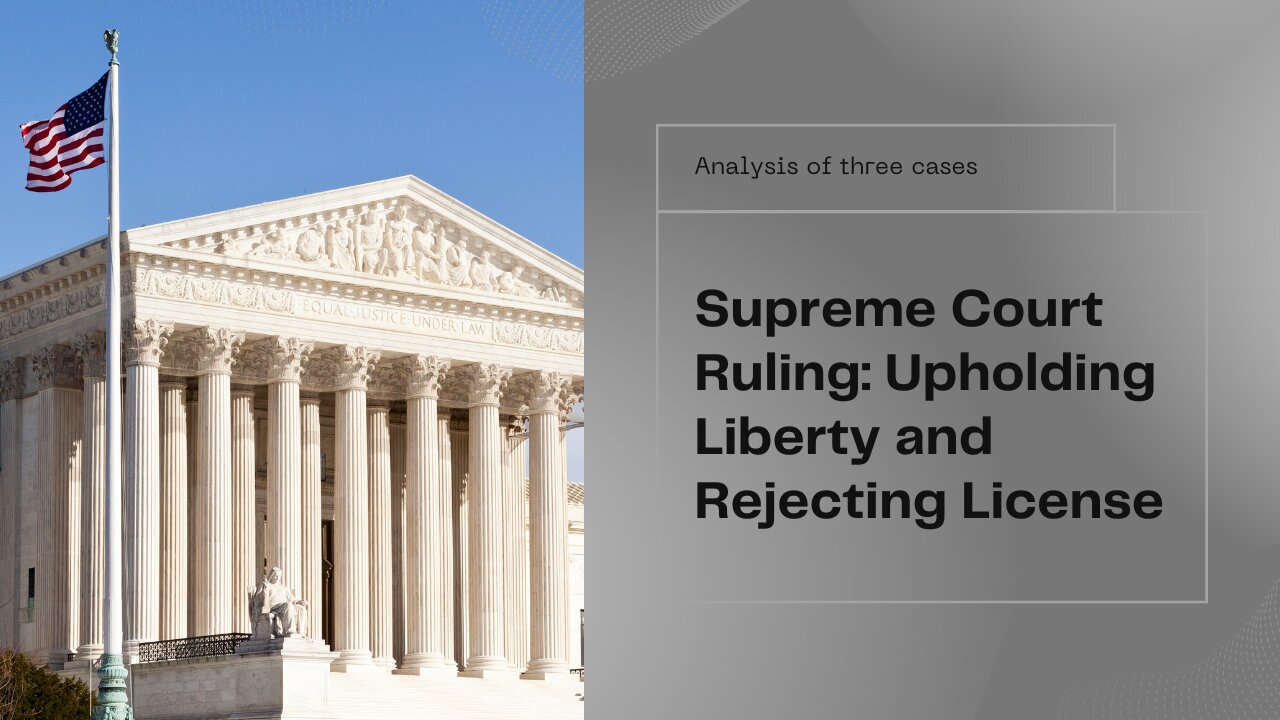
The opinions, in order discussed:
Grants Pass v. Johnson et al.
https://www.supremecourt.gov/opinions/23pdf/23-175_19m2.pdf
Fischer v. United States
https://www.supremecourt.gov/opinions/23pdf/23-5572_l6hn.pdf
Loper Bright Enterprises v. Raimondo and Relentless v. Raimondo (consolidated)
https://www.supremecourt.gov/opinions/23pdf/22-451_7m58.pdf
Declarations of Truth X feed:
Declarations of Truth Locals Community:
https://declarationsoftruth.locals.com/
Conservative News and Views:
Clixnet Media
